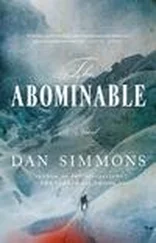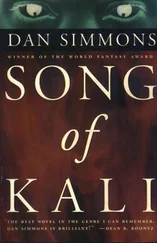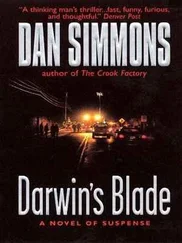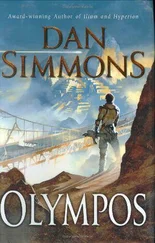At first, the lack of connection there—no telephone, no Internet, no television—almost gave him a sense of vertigo. Despite his previous discipline as a writer and academic, he was still used to being connected. But as the days turned into weeks, the silence, especially the mental silence that comes from not being hammered by e-mail and phone calls, turned first into a pleasant advantage and then into a necessity. He thought of making the occasional call when in Oak Hill or Elm Haven—to his agent, to his daughters—but he did not need to make the phone calls and soon found reason to forget them.
He found a newspaper kiosk in Elm Haven and occasionally bought the Peoria Journal Star , ostensibly for national news, although it was the provincial Peoria and rural news that really caught his attention. More frequently, often after writing for hours, he would come down into the basement where I used to sleep and listen to one of the radios there—relaxing on my bed and listening to distant St. Louis’s one good jazz station much in the way that I used to spend hot summer nights listening to Cardinals and Cubs games, the voices rising and falling across the static of the breathing earth’s ionosphere, the sense of distance and space implicit in the ambiguities of the reception.
Most of the time, however, Dale Stewart celebrated his isolation. The weirdness of the house, the phantom light on the sealed-off second floor, and the encounters with skinheads and a former bully bemused him more than concerned him. It gave a flavor of strangeness without the harshness of real threat. It kept him inward-turned and progress-aimed.
He began to take walks. After decades living in the American West where the view is everything, where the scope and scale of nature is all but overwhelming, Dale found great satisfaction in finding a modest view from the small hill a quarter of a mile behind the barn—the flat area where I had buried my dog, Wittgenstein, more than forty years earlier, although Dale did not know that—and then following the frozen creek south another three-quarters of a mile to the Johnsons’ small woods. The gray skies and flat vistas seemed to make the scale of nature smaller here, more accessible, more observable, and Dale soon began to walk an hour or two each day, despite the harsh weather. Sometimes, heading back up the creek toward the farm or cutting across the frozen fields, Dale could not even see the farmhouse until the last few hundred yards, the barn appearing first, looming out of the snow and gloom, then the rusted oval of the fueling station gas tank hanging in its iron girders, then the washed-out, pale box of the house solidifying in the flat light.
He would make himself lunch—usually soup and French bread and some cheese—and then return to my Old Man’s study with its rolltop desk, bookcases, sleigh bed, and decent light. There he’d work, typing on his ThinkPad for several more hours, often printing out the day’s work on the compact HP Laserjet printer he’d brought along so that he could edit and revise the hard copy in the evening or the next morning. Then dinner—usually something more substantial than soup and bread—and another hour or two of writing before spending the evening reading or going to the basement to listen to jazz through the console radio’s scratchy but wonderful speaker.
Dale was writing easily, but not well. Both his academic background and commercial writing experience had trained him to start from the outside in: that is, to structure the tale, research the characters and settings, and then write inward, the way a whittler carves a shape from a stick. I was just a kid when I died, but I had already discovered one important truth about writing—to do it well, one has to work from the inside out . That is, there has to be a quiet but unshakable center to the tale, whether in the core of the characters or the story or, preferably, in both, and everything must spiral outward from that point. Dale was still whittling away, trying not to cut across the grain and hoping to find honest shapes in the wood.
His sense of place in the unformed novel was very strong. What, after all, is more real to us than the geography of our childhoods? Occasionally he would get in the Land Cruiser and drive slowly through the streets of Elm Haven to refresh himself on some item of geography, but in truth he wasn’t writing about the sad and battered Elm Haven of this shoddy new century. Dale was living in the summer of 1960 now, and when he drove the streets of the little town he was looking at structures and people who were no longer there, who would never be there again.
Dale had no guilt at borrowing my own journals of jottings and vignettes and character scribbles to capture the kids of the summer of 1960—including himself. After my death, Dale had promised himself that he would become the writer that his friend Duane had wanted to be, so it seemed natural that he would build on my old notes and observations to write this particular book.
But they were my notes and observations, not Dale’s. He still had not discovered his own key to the door opening on that largely forgotten summer. So when he began the early-chapter descriptions of our eleven-year-old friends—Mike O’Rourke, Kevin Grumbacher, Jim Harlen, Donna Lou Perry, Cordie Cooke, and the others—they were my perceptions and misperceptions, not Dale’s. Not even the images of young Dale himself and of his little brother, Lawrence, came completely from Dale. Perhaps he was afraid to go back to those memories all by himself.
The black dog returned nineteen days after he arrived.
It was late afternoon and Dale was taking his favorite walk, heading west to the flat rise, following the creek south to the woods on Mr. Johnson’s farm, then cutting northeast along a gully, coming out at Calvary Cemetery on County Road 6. Then it was less than a mile along the gravel road to the driveway back to the farmhouse.
This afternoon, he had just reached the woods and was preparing to cross the creek before hiking east when he saw the dog twenty yards or so behind him, on the same side of the creek cut. When Dale stopped, the dog stopped.
For a moment he was sure that he had solved the tiny mystery; if the dog was here in the Johnsons’ woods, then the dog must belong to Mr. Johnson. But then Dale realized that the hound had followed him from Duane’s farm.
Dale took a few steps toward the dog. The small black dog retreated a few steps, then turned and waited. Dale stood looking at it, wishing that he’d brought his binoculars.
The black dog appeared a bit larger than he remembered it, but the rest of his description to Sandy Whittaker still applied: a relatively small dog, all black except for a patch of pink on its flattened muzzle, floppy ears, no tail visible, and barrel-chested. He tried to remember the breed that Sandy had mentioned—a French bulldog?
The dog waited for Dale to begin walking again before it followed. Dale slid down the steep creek bank and jumped the narrow, half-frozen stream. The dog picked its way across twenty yards to the north and scrambled up the steep slope.
Dale followed his usual route back to County 6, following old cow paths along the rim of a narrow ridge that ran between two gullies. The stream in the south gully had been named Corpse Creek by Dale and his buddies forty-five years earlier. There had been a three-foot-deep pool on the east side of the gravel road where the creek ran through a tall culvert—a favorite hiding place for the boys—and frequently, dead animals hit by speeding cars on County 6 had ended up in the pool. Thus, Corpse Creek.
The black dog stayed twenty yards back, picking its way across frozen grass in that tenderfooted way that some dogs have outdoors. At one point, Dale stopped and threw a rock in the dog’s general direction—not trying to hit it, merely trying to get it to go away. The black dog sat on its haunches and stared at him.
Читать дальше












